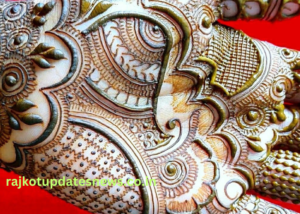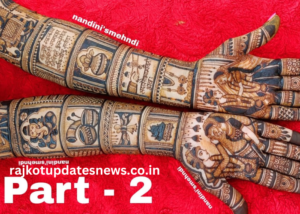
The phrase “Jai Shree Ram” resonates deeply within the hearts of millions, symbolizing devotion, virtue, and the triumph of good over evil. Rooted in ancient scriptures, this chant represents Lord Rama, an embodiment of dharma and righteousness, whose life story continues to inspire countless followers.
The legacy of Lord Rama is celebrated through various cultural expressions, art forms, and spiritual practices. The imagery associated with Wallpaper:-Grwwu-O6mc= Jai Shree Ram serves as a powerful reminder of his ideals, offering both aesthetic appeal and spiritual solace to those who seek it. Through various artistic representations, devotees can connect with the divine, celebrating the qualities that Lord Rama embodies.
What is the significance of “Jai Shree Ram” in Hindu culture?
The phrase “Jai Shree Ram” holds immense significance in Hindu culture, serving as a powerful invocation of Lord Rama’s virtues. It is a chant that embodies the essence of devotion, faith, and the pursuit of righteousness. In Hinduism, Lord Rama is regarded as the ideal man—Maryada Purushottama—who exemplifies virtues such as honor, courage, and compassion.
This chant is often recited during religious ceremonies, festivals, and personal prayers, reinforcing the collective consciousness of Lord Rama’s teachings. It acts as a spiritual call to action, encouraging individuals to embrace dharma in their daily lives. The significance of Wallpaper:-Grwwu-O6mc= Jai Shree Ram lies not only in its aesthetic appeal but also in its ability to evoke a sense of community among devotees, fostering unity and shared devotion.
Moreover, “Jai Shree Ram” has become a rallying cry for social and political movements, symbolizing a collective identity rooted in faith and tradition. Its widespread usage reflects the deep-seated cultural connection that individuals have with Lord Rama and his ideals, highlighting the enduring relevance of his teachings in contemporary society.
How does Lord Rama’s life story inspire followers?
Lord Rama’s life story, as narrated in the epic Ramayana, serves as a source of inspiration for millions. His journey, characterized by trials, tribulations, and triumphs, showcases the importance of perseverance, integrity, and unwavering faith in the face of adversity. Through his experiences, followers learn valuable lessons about the human condition, ethics, and the pursuit of righteousness.
One of the most compelling aspects of Lord Rama’s narrative is his commitment to dharma. Despite facing numerous challenges, including exile and the abduction of his wife, Sita, he remains steadfast in his moral principles. His choices reflect the complexities of life, teaching followers that adhering to one’s values is paramount, even when faced with difficult decisions.
The depiction of Lord Rama’s virtues is further celebrated in various art forms, including Wallpaper:-Grwwu-O6mc= Jai Shree Ram. These artistic representations capture moments from his life, allowing devotees to reflect on his teachings and draw inspiration from them. By immersing themselves in these visuals, followers can cultivate a deeper understanding of Lord Rama’s principles, reinforcing their commitment to leading virtuous lives.
What are the different artistic representations of Lord Rama?
Artistic representations of Lord Rama are abundant and diverse, reflecting his significance in Hindu culture. Traditional paintings and sculptures often depict him with a bow and arrow, symbolizing his warrior spirit and readiness to fight evil. Such imagery conveys strength and determination, resonating deeply with devotees who seek to embody these qualities in their own lives.
In contemporary art, digital representations have emerged, offering a modern twist on traditional themes Wallpaper:-Grwwu-O6mc= Jai Shree Ram serves as an example of how digital art can capture the essence of Lord Rama while making it accessible to a broader audience. These visuals often incorporate vibrant colors and intricate designs, inviting viewers to engage with the spiritual narrative in innovative ways.
Furthermore, festivals such as Diwali and Ram Navami are celebrated with elaborate decorations that feature images of Lord Rama. These artistic displays not only enhance the festive atmosphere but also serve as a visual reminder of his ideals. The proliferation of Lord Rama’s imagery in various forms underscores the deep reverence that devotees hold for him and the importance of celebrating his legacy through art.
How is “Jai Shree Ram” celebrated during festivals?
The celebration of “Jai Shree Ram” during festivals is a vibrant and joyous affair, bringing communities together in devotion. One of the most significant occasions is Ram Navami, which marks the birth of Lord Rama. During this festival, devotees recite prayers, perform rituals, and engage in cultural programs that highlight his life and teachings. The chant “Jai Shree Ram” resonates throughout temples and homes, creating an atmosphere of devotion and festivity.
In addition to Ram Navami, Diwali is another festival where the spirit of Lord Rama is prominently celebrated. The festival commemorates his return to Ayodhya after defeating the demon king Ravana. Homes are decorated with lights and rangoli, symbolizing the victory of light over darkness. The chant “Jai Shree Ram” serves as a reminder of this triumph, reinforcing the values of good over evil.
During these celebrations, visuals associated with Wallpaper:-Grwwu-O6mc= Jai Shree Ram are widely used. Temples are adorned with paintings and posters depicting Lord Rama, enhancing the spiritual ambiance. This visual representation serves to inspire and uplift the spirits of devotees, reinforcing their connection to the divine and their commitment to uphold the values that Lord Rama embodies.
How does “Jai Shree Ram” foster community among devotees?
The chant “Jai Shree Ram” plays a pivotal role in fostering a sense of community among devotees. When individuals come together to recite this invocation, they collectively express their devotion to Lord Rama, creating bonds that transcend individual differences. This shared experience cultivates unity and camaraderie among participants, reinforcing their shared beliefs and values.
Community gatherings, such as bhajans and kirtans, often feature the chant, providing opportunities for individuals to connect on a spiritual level. These gatherings not only promote social interaction but also serve as a platform for sharing stories and teachings related to Lord Rama. Through these interactions, devotees can deepen their understanding of their faith while building lasting relationships with others who share similar beliefs.
Moreover, the imagery associated with Wallpaper:-Grwwu-O6mc= Jai Shree Ram enhances community celebrations. During festivals and events, visuals of Lord Rama are displayed prominently, creating a communal space where everyone can participate in the collective worship. This visual aspect reinforces the significance of the chant and the teachings of Lord Rama, further strengthening the sense of belonging within the community.
What role does “Jai Shree Ram” play in personal spirituality?
The chant “Jai Shree Ram” serves as a powerful tool for personal spirituality, enabling individuals to connect with their inner selves and the divine. Reciting this mantra is often part of daily prayers, helping devotees cultivate mindfulness and devotion. The repetition of “Jai Shree Ram” acts as a form of meditation, allowing individuals to focus their thoughts and intentions on Lord Rama’s virtues.
In addition to its meditative qualities, the chant serves as a reminder of the values that Lord Rama represents. As followers recite “Jai Shree Ram,” they are encouraged to reflect on their own lives, considering how they can embody the principles of truth, justice, and compassion. This introspective practice fosters personal growth and a deeper understanding of one’s spiritual journey.
Moreover, the visual representations associated with Wallpaper:-Grwwu-O6mc= Jai Shree Ram further enhance personal spirituality. Devotees often display these images in their homes, creating sacred spaces that inspire contemplation and devotion. The presence of Lord Rama’s imagery serves as a constant reminder of his teachings, reinforcing individuals’ commitment to living a life aligned with dharma.
How do devotees express their love for Lord Rama?
Devotees express their love for Lord Rama in various ways, reflecting the depth of their devotion. One of the most common expressions is through the recitation of prayers and chants. The phrase “Jai Shree Ram” is a powerful declaration of faith, often repeated during personal and communal prayers. This vocal expression reinforces their connection to Lord Rama and serves as a testament to their devotion.
Artistic expressions also play a significant role in how devotees celebrate their love for Lord Rama. Many create paintings, sculptures, and crafts that depict him in various forms. These artistic representations often incorporate the chant “Jai Shree Ram,” serving as a beautiful reminder of their devotion. The creation of such art fosters a deeper connection to Lord Rama and offers a personal outlet for spiritual expression.
Community involvement is another significant way devotees express their love for Lord Rama. Participating in festivals, organizing community events, and engaging in charitable work are all ways that individuals can honor his legacy. Such actions not only demonstrate their commitment to Lord Rama’s teachings but also reinforce the values of love, compassion, and service that he embodies.
Conclusion
The chant “Jai Shree Ram” and its associated imagery play a crucial role in the spiritual lives of millions. This invocation embodies the virtues of Lord Rama, serving as a powerful reminder of the ideals of righteousness and devotion. Through various artistic representations and communal celebrations, devotees connect with these values, fostering a sense of unity and purpose. As individuals continue to embrace the teachings of Lord Rama, the significance of Wallpaper:-Grwwu-O6mc= Jai Shree Ram will endure, inspiring generations to uphold the principles of love, justice, and compassion.


